Leave No Innovator Behind. Equity in STEM. MOBEX Ghana panel recap.
Last month, MOBEX Africa 2016 organized a panel, Leave No Innovator Behind, to discuss women and girls’ participation in science, technology, engineering and mathematics (STEM) in Ghana. I am proud to have ensured this panel was included, amidst the discussions of the latest mobile apps, fin tech and technology education in general. The discussion flowed between the specifics of STEM education, training and employment to the quality of education broadly, as panelists all recognize that a solid education is the foundation of a fulfilling life. Remarks can be broadly organized as barriers and solutions and within each into “A,B,C” themes. The issues and solutions is significant universality between Ghana and other countries in these regards.

Panelists included Lucy Quist, CEO of Airtel Ghana and The Exploratory’s advisory council member; Kinna Kintu, a prominent feminist and literary activist, and founder of Kinna Reads; Tom Tagoe, a neuroscientist, blogger and founder of GhScientific; Ethel Cofie, CEO of EDEL Technologies and founder of Women in Tech Africa; and Daniel Glover, general manager of TECNO; and The Exploratory’s founder, Dr. Connie Chow.
What are the key barriers to broader participation?
1) Access and Awareness
The divide in opportunities and information was palpable between urban / middle class and rural / poor. In general,
- there is a lack of extracurricular programs that cater to girls and those in rural areas;
- there is a lack of senior secondary schools that offer science and math as a focus;
- girls attend SSS in lower numbers because of distance and fees;
- there is a paucity of good basic schools, i.e. sufficiently resourced educational environments and knowledgeable, caring teachers, especially in rural areas.
The notion of privilege was brought up by the panelists as well as the audience. For example, both Quist and Cofie had fathers who were engineers who not only encouraged their interests in STEM, but also had the means to provide extracurricular support.
Lastly, there was a general lack of knowledge of Ghanaian/African women and men who are scientists /tech entrepreneurs, as well as awareness of variety and personal and financial rewards of STEM-related jobs. I posed the audience if they know of the following prominent people in STEM. About half the room knew of Dr. Allotey, a world renowned mathematician and physicist at the University of Ghana; one woman knew of Dr. Aba Bentil Andam, the 1st Ghanaian woman to have a PhD in particle physics and a current professor at Sunyani; about 5 people know of Dr. Esi Awuah,a civil engineer by training, currently the Vice Chancellor of the University of Energy and National Resources. Of course, everyone knew Steve Jobs and Mark Zuckerberg.
2) Bias
Culture and religion play a big role in creating expectations for girls and women that are limiting instead of liberating. Kinna elaborated that the traditional housekeeping and caring work expected of women and girls severely limits their time for studying, as well as for creative and passionate pursuits, including making, art, writing, science and engineering – whether on their own, or through participation in a program. I added that in many schools, girls often run errands for teachers during the school day, which takes time away from their learning.
A young woman, Martha, shared how, on the first day of her senior high school (10th grade), her math teacher came in and told the entire class of arts students that she will not waste time on teaching them. Martha was discouraged but worked hard anyway, and had another teacher who cared for her success. She eventually excelled in maths and graduated.
The discrimination comes also from classmates. Another young woman from the University of Ghana said she was one of 13 women out of 120 students in her computer science class at university. In group work they were assigned the clerical, less technical portions of assignments, and lamented that they did not have a chance to explore the practical aspects of coding. (Similar study has been seen in engineering classes in American universities).
Refreshingly, Daniel offered that the skills tests Tecno offers to candidates in advance of employment were able to eliminate inherent bias against women in hiring, resulting in a majority of his technical work force being women. This is encouraging, given how many academic assessments tend to exacerbate existing biases.
3) Care-less-ness
Just like many places around the world, including the United States, Kinna noted that the emphasis on achieving high scores on exams puts pressures on teachers and students to “chew and pour” – memorize and write an exam – rather than on practical aspects or deep understanding.
The curriculum, especially in STEM, lacks relevance to the real world, and students are hard pressed to find a connection to the information and principles they learn (if the latter at all) to real-life applications. For example the ICT (information and computer technology) curriculum involves learning the definitions of the components of a computer and keyboarding in the younger grades, to memorizing the names of programs and their menus in the upper grades. Granted, most schools lack access to computers and electronic devices. Nevertheless, one can teach computational thinking without hardware or software.
Lucy pointed out that a young person she met said he wanted to follow his father’s trade, because he wanted to make sure he could make a living to support his future family. We can all do a better job crafting our story about “Why STEM”, when we find out why (young) women choose particular careers – for financial security, to be of use to the community, for prestige even.
So what can be done?
1) Advocate
Advocate for equal participation at all levels for women and girls in STEM. Advocate for equity in opportunities. Advocate for policies, accountability and monitoring mechanisms and incentives to increase equity, especially for those in disadvantaged areas.
I agreed with Kinna that the inherent right of women and girls to access education, to be free from bias in school and in the workplace, should be sufficient reason to fight bias and encourage them to broaden their studies, including STEM. However, it serves us well to have the figures in our pockets to show the current disparity, and the “data” that lends support to demographic and economic reasons for greater diversity.
Case in point, a man in the audience posed a long comment during the Q&A, essentially saying that with the third most powerful woman in Ghana being a woman (the Chief Justice Georgina Wood), that having this discussion was a waste of time. Clearly, we have work to do to dismantle the mistaken notion that a few representatives in high places means we’ve “accomplished” this status called equity.
So what are the stats?
- Gender parity (ratio of girls to boys) in senior secondary school (grades 10-12) is 0.7
- Only 22% of all polytechnic and university students in STEM fields in Ghana are women (GES Science education unit)
Stats from studies in the western hemisphere that may be extrapolated to Africa
- Patents of mixed gender teams are cited 30% more often
- Women-led tech companies has a 35% higher return on investment
Since culture plays such a big role in molding beliefs and attitudes, pointing out that women’s roles in pre-colonial Ghanaian societies were much more expansive, preferably through literature (and even video games like the ones Leti Arts is developing) can shift “traditional” mindsets and present a new “mythology” to the younger generation.
2) Be a Bridge
Talking is good, action is better.
As mentioned, both Ethel and Lucy have fathers who encouraged their pursuit of technology at a young age. Similarly, those who have interest needs mentoring – each girl-child needs someone to encourage them to counter the discouragement they too often receive, and to show them a path, to make connections. Whether in their families, in their churches or other social circles, each of us can take this sort of healthy interest in a young person.
Someone in the audience pointed out that the emphasis that STEM is for the “bright” and is a “hard” subject discourages many. Tom pointed out that science is in fact hard – and there is no doubt that certain people have a predisposition towards these topics. Since precociousness for scientific thinking, creativity and problem solving is very different from book learning, the pitfall is to use academic standing only as a proxy for “bright”: we build a bridge towards STEM by clarifying to young people that a complement of skills and talents are required to be successful in STEM. To encourage more girls and women to participate, we should note that the brain is a muscle that can be exercised: one can learn to learn science and mathematics; one can learn to be persistent even when faced with difficult subject matter. This growth mindset, researched by Dr. Carol Dweck, is key.
There are also literal crossing of bridges. Since children in rural areas encounter very few professionals, deliberately forming or joining a group to visit rural schools can make a huge difference in building aspirations for young people. Lucy’s Evolve with STEM campaign and organizations such as Young at Heart Ghana, Tech Needs Girls and The Exploratory do just that.
3) Be Courageous
Being an advocate and building bridges to include more women and girls in STEM requires us to question the status quo, to highlight inadequacies and promote cooperation to achieve a new vision. It is not easy. It requires courage.
Making sure that the content of what we teach is relevant, the delivery is equitable, the environment is joyful, the interaction is collaborative requires courage.
Using our platform – be it at the CEO roundtable, at the chamber of commerce, at the teacher’s association meeting, or in the classroom itself – to speak up on behalf of others’ benefit and not just our own requires immense courage.
Ghana is still early in its development in science and technology. May it have the wisdom not to repeat the mistakes of the west in terms of equity, but build this principle into the educational, business, research, and funding systems.
Let’s have the courage to use our hearts and minds to build the world that is better for everyone. As Lucy said, we’d rather not have the conversation about gender equity in STEM. So let’s get to work.So let’s get to work.





